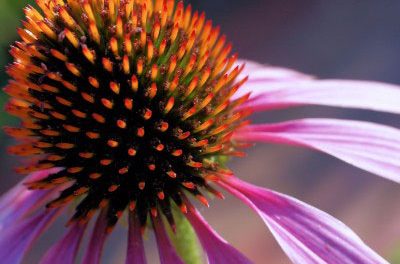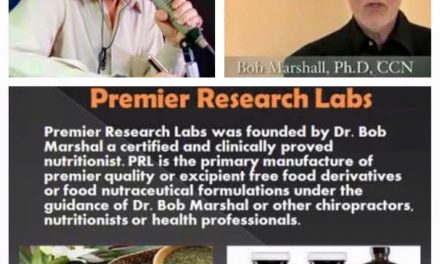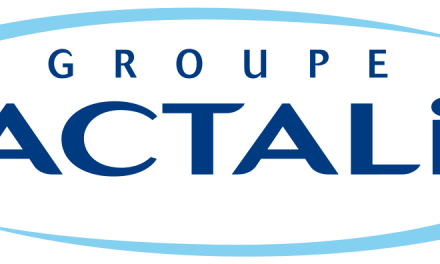This year alone, nearly 600,000 Americans will lose their lives to cancer. Recent estimates tell us that 41 percent of all Americans will be diagnosed with cancer during their lifetimes and 21 percent of the population will lose their lives to this devastating disease.[1] A new report released by the World Health Organization‘s (WHO) forecasts that by 2035, an incredible 24 million people will be diagnosed with cancer globally.[2] These numbers reflect the need for a complete overhaul of our approach to cancer.
Despite being overlooked for decades, volumes of scientific evidence prove that diet and nutrition play a leading role in cancer development. Only in recent years have mainstream physicians and health groups begun to recognize the importance of our lifestyle choices when it comes to preventing and reversing cancer. Even the WHO report recommends a diet rich in fruits, vegetables and whole grains as a powerful way to help stave off this disease. Here is my list of anticancer superfoods that you can begin incorporating into your diet today for greater health and vitality. I’ve included dozens of scientific citations demonstrating the benefits of each of these nutrient-rich foods.
Alkaline Foods
The vast majority of Americans consume an excess of acid-forming foods. Research has shown that tumor growth increases in an acid environment.[3][4][5] The blood is maintained in the body at a slightly alkaline level of between 7.2 and 7.4.
Eating alkaline foods keeps the blood pH in its ideal range, which is important for the prevention and treatment of cancer. Ideally, the diet should consist of 80 percent alkaline-forming foods, such as those available from many raw fruits and vegetables, as well as nuts, seeds, grains, and legumes. What follows is a list of recommended alkaline-forming foods:
Fruits: Berries, apples, apricots, avocados, bananas, currants, dates, figs, grapefruit, grapes, kiwis, lemons, limes, mangos, melons, nectarines, olives, oranges, papayas, peaches, pears, persimmons, pineapple, quince, raisins, raspberries, strawberries, tangerines, and watermelon. (The most alkaline-forming foods are lemons and melons.)
Vegetables: Artichoke, asparagus, sprouts, beets, bell peppers, broccoli, Brussels sprouts, cabbage, carrots, cauliflower, celery, collards, corn, cucumbers, eggplant, endive, ginger, horseradish, kale, kelp, seaweeds, mustard greens, okra, onions, parsley, potatoes, radishes, spinach, squash, tomatoes, watercress, and yams.
Whole Grains: Amaranth, barley, oats, quinoa, and wild rice.
Beans/Legumes: Almonds, chestnuts, chickpeas, green beans, lima beans, peas, and soybeans.
Seeds: Alfalfa, chia, coconut, radish, and sesame.
(Editor’s Note: Check out the fun video below which outlines some foods that are part of an anti-cancer diet!)
Cruciferous Vegetables
Vegetables in the cruciferous family include kale, cabbage, broccoli, cauliflower, arugula, watercress, turnips, mustard plant, Brussels sprouts, and bok choy. Cruciferous vegetables contain detoxifying compounds called indoles and isothiocyanates, which have been proven to help prevent and reverse cancer[6][7][8][9] Recent research has identified sulforaphane, a compound found in broccoli, cabbage, and other cruciferous vegetables as a potent anticancer agent.[10]
Green Foods
Wheatgrass, barley grass, alfalfa, blue-green algae, arugula, spinach, chlorella and spirulina, and other green foods are rich in blood-purifying chlorophyll and other important phytonutrients for detoxifying the system and rejuvenating organs. Laboratory tests have established that chlorophyllinhibits the activity of carcinogens at a molecular level.[11] Studies have demonstrated the capacity of chlorophyll-rich foods to reduce tumor growth.[12][13][14].Green powders are loaded with phytonutrients proven to be highly beneficial in cancer prevention and healing.
Red Foods
Research confirms that red foods such as strawberries, tomatoes, raspberries, tart cherries, cranberries, and goji berries are high in immunosupportive and cancer-fighting nutrients such as lycopene and carotene.[15][16][17]Many red foods also have high antioxidant content, making them an integral component of any anticancer diet. The antioxidant power of raspberries, strawberries, pomegranate, and dozens of other nutrient-rich fruits make some red and berry powders cancer superfoods.
Fiber
Though not a food itself, fiber is an important component of fruits, vegetables, and whole grains. The typical American diet includes about 14 g of fiber each day, which falls short of what is necessary for cancer prevention. Studies have indicated that 30g of dietary fiber daily decrease the risk of colorectal cancer. Research has also suggested that high fiber intake may lower the risk of breast, colorectal, uterine and prostate cancers.[18][19]
Olive Oil
Olive oil has been shown to possess anticancer properties. Studies have demonstrated that the monounsaturated fatty acids contained in olive oil have a protective effect against cancer growth. [20][21] Research has also shown that the phytochemicals abundant in olive oil inhibit cancer growth in vitro.[22] But remember, more isn’t always better. Olive oil still has 120 calories per tablespoon, so don’t go overboard. For maximum benefit, olive oil should be used in moderation. Choose a good-quality, extra virgin, cold-pressed variety.
Juices
Freshly squeezed fruit and vegetable juices provide valuable enzymes and antioxidant nutrients that are easily digestible. Compounds in cabbage juice have been observed to have favorable effects on stomach and colorectal cancer.[23][24] Rich in beta-carotene and vitamin A, carrot juice is beneficial but should be watered down, as it is also high in sugar, and can potentially spike blood sugar levels.[25] Adding a teaspoon of vitamin C to juices creates an even more potent preventive tonic.
Green Tea
High in antioxidants known as polyphenolic catechins, green tea has been shown to help prevent skin, lung, esophageal, stomach, pancreatic, and bladder cancer in animals.[26] Studies have demonstrated that green tea extract halts the spread of chronic lymphocytic leukemia.[27] Recent research also indicates that green tea contains compounds that considerably slow the growth of cancer cells.[28]
Mushrooms
Several varieties of mushrooms have powerful healing properties. The maitake mushroom kills cancer cells by enhancing the activity of T-helper cells.[29] Research has shown the maitake mushroom to exert a favorable effect on various types of cancer, including breast, colon, and prostate.[30][31][32]Both shiitake and reishi mushrooms have also been observed to have strong antitumor properties in animals.[33][34][35]Research has revealed that the cordyceps mushroom inhibits the division and proliferation of cancer cells.[36] And, surprisingly, the common white button mushroom has been shown to suppress aromatase activity and estrogen biosynthesis, which make it an excellent breast cancer chemopreventive agent.[37]
Seaweeds
Chinese medicine has long recognized the value of seaweed for treating cancers, as it softens hardened tumors. More recently, research has shed light on the powerful mix of micronutrients, including Vitamin C and Vitamin E, as well as minerals, iodine, fiber, and polysaccharides in seaweed, which make it a powerful nutritional tool in combating cancer.[38][39] Considered to be one of the healthiest populations on earth, the Japanese consume more seaweed than any other nation.
Spices
Spices offer numerous health-promoting benefits, and certain spices have been found to aid in the prevention and treatment of cancer. Research has associated black pepper and black cumin seedintake with a lower incidence of colon cancer.[40][41][42] Rosemary is known to help prevent DNA damage by carcinogens and suppress cancer cell proliferation.[43][44][45] Capsaicin, an ingredient found in chili peppers, kills prostate cancer cells.[46] Evidence suggests that parsley combats lung and breast cancer.[47][48]
References
[1] “41 percent of Americans will get cancer.” UPI.com. http://www.upi.com/Health_News/2010/05/06/41-percent-of-Americans-will-get-cancer/UPI-75711273192042/ (accessed December 2, 2013).
[2] World Health Organization. “World Cancer Report 2014 (ePUB).” WHO.int. http://apps.who.int/bookorders/anglais/detart1.jsp?codlan=1&codcol=80&codcch=275 (accessed February 2, 2014).
[3] Smallbone, Kieran, David J. Gavaghan, Robert A. Gatenby, and Philip K. Maini. “The Role Of Acidity In Solid Tumour Growth And Invasion.” Journal of Theoretical Biology 235, no. 4 (2005): 476-484.
[4] Robey, IF, et. al. “Bicarbonate Increases Tumor PH and Inhibits Spontaneous Metastases.” Cancer Res 69, no. 6 (2009): 2260-8.
[5] Rofstad, Einar K., et al. “Acidic Extracellular pH Promotes Experimental Metastasis of Human Melanoma Cells in Athymic Nude Mice.” Cancer Research 66 (2006). http://cancerres.aacrjournals.org/content/66/13/6699.abstract?ijkey=6f1de3dcb24df43416f5003b8f89 2f1b6fd9d741&keytype2=tf_ipsecsha (accessed March 5, 2012).
[6] Cover, CM, et. al. “Indole-3-carbinol Inhibits the Expression of Cyclin-Dependent Kinase-6 and Induces a G1 Cell Cycle Arrest of Human Breast Cancer Cells Independent of Estrogen Receptor Signaling.” J Biol Chem 273, no. 7 (1998): 3838-47.
[7] Chen, I. et. al. “Indole-3-carbinol and Diindolylmethane As Aryl Hydrocarbon (Ah) Receptor Agonists And Antagonists In T47D Human Breast Cancer Cells.” Biochemical Pharmacology 51, no. 8 (1996): 1069-1076.
[8] Verhagen, Hans, Henrik E. Poulsen, Steffen Loft, Geert van Poppel, Marianne I. Willems, and Peter J. van Bladeren. “Reduction Of Oxidative DNA-damage In Humans By Brussels Sprouts.” Carcinogenesis 16, no. 4 (1995): 969-970.
[9] Verhoeven, H. et. al. “Epidemiological Studies on Brassica Vegetables and Cancer Risk.”Cancer Epidemiology, Biomarkers & Prevention 5, no. 9 (1996): 733-48.
[10] “Discovery May Help Scientists Boost Broccoli’s Cancer-Fighting Power.” EurekAlert!. http:// www.eurekalert.org/pub_releases/2010-10/uoic-dmh102110.php (accessed March 2, 2012).
[11]”Chlorophyll and Chlorophyllin.” Linus Pauling Institute at Oregon State University. http://lpi.oregonstate.edu/infocenter/phytochemicals/chlorophylls/index.html#biological_ activity (accessed January 3, 2012).
[12] Cha, Kwang Hyun, Song Yi Koo, and Dong-Un Lee. “Antiproliferative Effects Of Carotenoids Extracted From Chlorella Ellipsoidea And Chlorella Vulgaris On Human Colon Cancer Cells.” Journal of Agricultural and Food Chemistry 56, no. 22 (2008): 10521-10526.
[13] Mathew, B., R. Sankaranarayanan, P. P. Nair, C. Varghese, T. Somanathan, B. P. Amma.,N. S. Amma, and M. K. Nair. “Evaluation of Chemoprevention of Oral Cancer with Spirulina Fusiformis” Nutrition and Cancer 24, no. 2 (1995): 197-202
[14] Maeda, N., et al. “Anti-Cancer Effect of Spinach Glycoglycerolipids as Angiogenesis Inhibitors Based on the Selective Inhibition of DNA Polymerase Activity.” Mini Reviews in Medicinal Chemistry 11 (2011). http://www.ncbi.nlm.nih.gov/pubmed/21034405 (accessed March 3, 2012)
[15] Blot, William J., You-Hui Zhang, Su-Fang Zheng, Chung S. Yang, Guo-Qing Wang, Sanford Dawsey, Wande Guo, Philip R. Taylor, Jun-Yao Li, Bing Li, Joseph F. Fraumeni, Fusheng Liu, Yu-hai Sun, Joseph Tangrea, Buo-qi Liu, Yu Yu, Guang-Yi Li, and Mitchell Gail. “Nutrition Intervention Trials In Linxian, China: Supplementation With Specific Vitamin/Mineral Combinations, Cancer Incidence, And Disease-Specific Mortality In The General Population.” Journal of the National Cancer Institute 85, no. 18 (1993): 1483-1491.
[16] Pinela, J. et al. “Nutritional Composition and Antioxidant Activity of Four Tomato (Lycopersiconesculentum L.) Farmer’ Varieties in Northeastern Portugal Home Gardens.” Food and Chemical Toxicology 50, no. (3-4) (2011): 829-34.
[17] Tanaka, T., M.Shminimizu, and H.Moriwaki. “Cancer Chemoprevention by Carotenoids.” Molecules 14;17, no. 3 (2012): 3202-42. http://www.ncbi.nlm.nih.gov/pubmed/22418926 (accessed March 27, 2012).
[18] Fiber.” University of Maryland Medical Center. http://www.umm.edu/altmed/articles/fiber-000303.htm (accessed December 3, 2012).
231 “High-Fiber Diet May Thwart Colon Cancer.” HealthDay, USATODAY.com. http://usatoday30.usatoday.com/news/health/medical/health/medical/cancer/story/2011-11-11/High-fiber-diet-may-help-thwart-colon-cancer/51168932/1 (accessed March 28, 2012).
[19] “Uterine Cancer—2—Endometrial Cancer, Vitamin A, Vitamin C—Life Extension Health Concern.” Life Extension. http://www.lef.org/protocols/cancer/uterine_cancer_02.htm (accessed March 28, 2012).
[20] Menendez, JA, and R Lupu. “Mediterranean Dietary Traditions for the Molecular Treatment of Human Cancer: Anti-oncogenic actions of the main olive oil’s monounsaturated fatty acid oleic acid.” Curr Pharm Biotechnol 7, no. 6 (2006): 495-502.
[21] Owen, R W, R Haubner, G Wertele, W E Hull, B Spiegelhalder, and H Bartsch. “Olives And Olive Oil In Cancer Prevention.” European Journal of Cancer Prevention 13, no. 4 (2004): 319-326.
[22] Menendez, Javier A, Alejandro Vazquez-Martin, Rocio Garcia-Villalba, Alegria Carrasco-Pancorbo, Cristina Oliveras-Ferraros, Alberto Fernandez-Gutierrez, and Antonio Segura-Carretero. “Anti-HER2 (erbB-2) Oncogene Effects Of Phenolic Compounds Directly Isolated From Commercial Extra-Virgin Olive Oil (EVOO).” BMC Cancer 8, no. 1 (2008): 377.
[23] Choi, Hyun, Do Lim, and Jung Park. “Induction Of G1 And G2/M Cell Cycle Arrests By The Dietary Compound 3,3′-diindolylmethane In HT-29 Human Colon Cancer Cells.” BMC Gastroenterology 9, no. 1 (2009): 39.
[24] Bhatnagar, N., X. Li, Y. Chen, X. Zhou, S. H. Garrett, and B. Guo. “3,3′-Diindolylmethane Enhances The Efficacy Of Butyrate In Colon Cancer Prevention Through Down-Regulation Of Survivin.” Cancer prevention research 2, no. 6 (2009): 581-589.
[25] Schnäbele, K., et al. “Effects of Carrot and Tomato Juice Consumption on Faecal Markers Relevant to Colon Carcinogenesis in Humans.” The British Journal of Nutrition 99, no. 3 (2008): 606-613. http://www.ncbi.nlm.nih.gov/pubmed/18254985 (accessed March 13, 2012).
[26] Tea.” Linus Pauling Institute at Oregon State University. http://lpi.oregonstate.edu/infocenter/phytochemicals/tea (accessed January 3, 2012).
[27] “Green Tea Extract Appears to Keep Cancer in Check in Majority of CLL Patients.” Mayo Clinic. http://www.mayoclinic.org/news2010-rst/5833.html (accessed January 3, 2012).
[28] Okello, EJ, GJ McDougall, S Kumar, and CJ Seal. “In Vitro Protective Effects of Colon-Available Extract of Camellia Sinensis (tea) Against Hydrogen Peroxide and Beta-amyloid (Aβ((1-42))) Induced Cytotoxicity in Differentiated PC12 Cells..” Phytomedicine 15, no. 18 (2011): 691-6.
[29] Israilides, C., D. Kletsas, D. Arapoglou, A. Philippoussis, H. Pratsinis, A. Ebringerová, V. Hiíbalová, and S.E. Harding. “In Vitro Cytostatic And Immunomodulatory Properties Of The Medicinal Mushroom Lentinula Edodes.”Phytomedicine 15, no. 6-7 (2008): 512-519.
[30] Chan, J. Y., et al. “Enhancement of In Vitro and In Vivo Anticancer Activities of Polysaccharide Peptide from Grifolafrondosa by Chemical Modifications.” Pharmaceutical Biology 49, no. 11 (2011): 1114-1120
[31] Masuda, Y. “A Polysaccharide Extracted from GrifolafrondosaEnhances the Anti-tumor Activity of Bone Marrow-Derived Dendritic Cell-Based Immunotherapy against Murine Colon Cancer.” Cancer Immunology, Immunotherapy 59, no. 10 (2009): 1531-41.
[32] Fullerton, S. A. “Induction of Apoptosis in Human Prostatic Cancer Cells with Beta-glucan (Maitake Mushroom Polysaccharide).” Molecular Urology 4, no. 1 (2000): 7-13.
[33] Tanaka, K., et al. “Oral Ingestion of LentinulaedodesMycelia Extract Inhibits B16 Melanoma Growth via Mitigation of Regulatory T Cell-Mediated Immunosuppression.” Cancer Science 102, no. 3 (2011): 516-21.
[34] Israilides, C., et al. “In Vitro Cytostatic and Immunomodulatory Properties of the Medicinal Mushrooms Lentinula Edodes.” Phytomedicine, June 2008.
[35] Sliva, Daniel. “Ganoderma Lucidum (Reishi) in Cancer Treatment.” Integrative Cancer Therapies 2, no. 4 (2003): 358-364.
[36] Das, Shonkor Kumar, Mina Masuda, Akihiko Sakurai, and Mikio Sakakibara. “Medicinal Uses Of The Mushroom Cordyceps Militaris: Current State And Prospects.” Fitoterapia 81, no. 8 (2010): 961-968.
[37] Chen, S., L. S. Adams, M. Belury, G. E. Shrode, S. L. Kwok, J. J. Ye, G. Hur, S. Phung, S.-R. Oh, and D. Williams. “Anti-Aromatase Activity Of Phytochemicals In White Button Mushrooms (Agaricus Bisporus).” CANCER RESEARCH 66, no. 24 (2006): 12026-12034.
[38] Burtin, Patricia. “Nutritional Value of Seaweed.” Electronic Journal of Environmental and Food Chemistry 2 (2003). http://www.scribd.com/doc/93899794/Nutritional-Seawaed (accessed January 3, 2012).
[39] Ermakova, S, R Sokolova, SM Kim, BH Um, V Isakov, and T Zvyagintseva. “Fucoidans From Brown Seaweeds Sargassum Hornery, Eclonia Cava, Costaria Costata: Structural characteristics and anticancer activity.” Appl Biochem Biotechnol 164, no. 6 (2011): 841-50.
[40] Gali-Muhtasib, H., M. Diab-Assaf, C. Boltze, J. Al-Hmaira, R. Hartig, etal.”Thymoquinone Extracted from Black Seed Triggers Apoptotic Cell Death in Human Colorectal Cancer Cells Via a p53-dependent Mechanism.” Internatinal Journal of Oncology 25, no. 2 (2004):857-66.
[41] Salim, Elsayed I., and Shoji Fukushima. “Chemopreventive Potential Of Volatile Oil From Black Cumin (Nigella Sativa L.) Seeds Against Rat Colon Carcinogenesis.” Nutrition and Cancer 45, no. 2 (2003): 195-202.
[42] S. Duessel, et al. “Growth Inhibition of Human Colon Cancer Cells by Plant Compounds.” Clinical Laboratory Science 21, no. 3 (2008): 151-7.
[43] Chan, M. “Effects Of Three Dietary Phytochemicals From Tea, Rosemary And Turmeric On Inflammation-induced Nitrite Production.” Cancer Letters 96, no. 1 (1995): 23-29.
[44] S. Cheung, et al. “Anti-proliferative and Antioxidant Properties of Rosemary RosmarinusOfficinalis.” Oncology Reports 17, no. 6 (2007): 1525-31.
[45] Ho, C.-T., T. Ferraro, Q. Chen, R. T. Rosen, and M.-T. Huang. “ChemInform Abstract: Phytochemicals In Teas And Rosemary And Their Cancer-Preventive Properties.” ChemInform 25, no. 15 (1994): 2-19.
[46] “Pepper Component Hot Enough to Trigger Suicide in Prostate Cancer Cells.” Cedars-Sinai Hospital. http://www.eurekalert.org/pub_releases/2006-03/aafc-pch031306.php (accessed 15 Mar, 2006.)
[47] Johnson, J. J. “Carnosol: APromising Anti-cancer and Anti-inflammatory Agent.” Cancer Letters 305, no. 1 (2011): 1-7. http://www.ncbi.nlm.nih.gov/pubmed/21382660 (accessed March 12, 2012).
[48] “Parsley, Celery Carry Crucial Component for Fight against Breast Cancer, Study Suggests.” Science Daily. http://www.sciencedaily.com/releases/2011/05/110509122732.htm (accessed March 21, 2012).
*Article originally appeared at Green Med Info.












